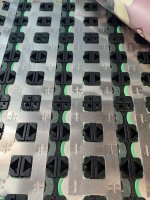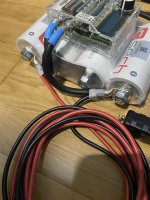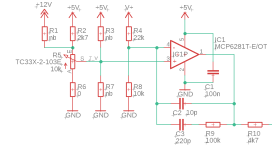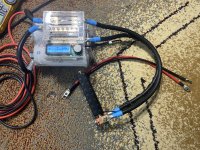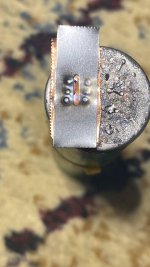How can you compare something that has already a good reputation (kweld) with some chinese stuff that you know nothing about?
You can set in the welder the default startup value for the joules.
Anyway why do you need so many joules? What are you welding?
My suggestion is first optimize your power source and the connection to it.
When all is optimized you will discover that you will need a lot less joules to weld and everything will be much cooler.
Don’t hurry to complain, instead think a bit what you did different that the others that get good results and are happy with the welder.
Edit. I just seen that you weld 0.2mm nickel. You don’t need 60j for that but more like 20-25j.
Edit2. With 25-30j I weld 0.15mm pure nickel and 0.1mm copper (with the actual pen) with the power source(capacitors) giving 1400-1500a
"How can you compare something that has already a good reputation (kweld) with some chinese stuff that you know nothing about?"
because i know by experience something can have good réputation without to be true, it's absolutely not an reference for me, i consider something good if i decide and validate it's good by myself and or by concret study on the subject, the advice of group of ppl who never touch any spot welder before except the bad first price one on china are not reference for me, same if that person doing less than 200 spots per month or if he use 3 days to make one battery ... Trust me for that
for the second point, the Chinese things, because i compare the Current capacity, but i precise i dont know if the current on the description are accurate, but i will told you that we will get it soon, and in addition, for the Kweld, you dont know as well ... who here measured it themselves ? Me yes, i get 100A less than what the Kweld displayed, but i'm not sure of the précision of my mesure with that current it's hard, i use 0.0002 Ohms 7W resistor 1% of accuracy and i mesure the voltage on my résistor with my Oscilloscope and i Spot on the both side of the resistor of course, i mesure that voltage and calculate the result by Ohms law, i will do the same with the 6000A Chinese one and we will see
"You can set in the welder the default startup value for the joules."
yes i say it, thx
"Anyway why do you need so many joules? What are you welding?"
First, take care, Joules and Joules, it's what i explained,
Exemple
1000A * 50ms = 50 Joules
2000A * 25ms = 50 Joules
you think you will have the same Energy injected and so the same result, NO !
both have the same energy but dont have the same result at all, depending of the dissipation of the material if you inject the same Joules but on more long time, you will heat around your point but not weld, so the automatic adjustment of the timing to maintain the same energy in spot i a good idea but only for very small range i think, the most important it's to have high current, short time as possible, Ideal it's to have current adjustment, and Timing adjustment (or Energy in place of timing) like that i ajust the current, i Select for exemple 1800A and 50J, Fortunately the Kweld have timeout protection, but fixed at 200mS it's already too much, you can't weld well if you need wait even 150ms you will overheat the part but not welding it, but if you had the possibility to inject more current, but on shot time to maintain the same energy you could solder the thing you can't with the 150ms and lower current
so, the amazing Kweld are not so amazing, it miss the cleaning pulse, miss a power switch, miss the timeout adjust, and miss the capacity of more current
and for answer at your question, i need to weld 0.2mm pure nickel to 18650 and 21700 with good repeatability and rapidity, and actually it's not the case, Even if i calibrate the Kweld, and i get something like 1400A, the repeatability is bad, and the power is not enough, if my tips is shaped yes but during the spotting the tips wear out, flatten and the contact surface becomes thinner and the power is no longer sufficient given the increase in contact surface, I also notice that the more the cables heat up, the worse the spot is good, which makes sense, and adaptive timing power compensation obviously doesn't help
it's me now have question, how can you compare Kweld who get alarm at 1800A with 6000A spot welder when you need to reduce the contact surface to weld comparing with Serious spot welder who Weld with 1.5 or 3mm contact surface ??? you see i can return the situation also, nothing is so easy as "good réputation = good" world are more complexe
"My suggestion is first optimize your power source and the connection to it."
it's on the way for, but you see the OEM set you have vidéo who make think it's powerful and get very good repetability without many heat, Yes ... on a shitty can, not on a real application, that yes i can complaining when precisely when you are made to believe that something is extraordinary, that you buy it and find that it is false and that it is far from it
"When all is optimized you will discover that you will need a lot less joules to weld and everything will be much cooler."
yes, when you add lots of money and arrive to the price of serious things haha stupid, but so, i will can validate if i'm true or false, the 6000A Capacitor based spot welder we bough cost around 450€ and the Kweld Cost acutally 210€ + 130€ of handle+Wires = 340€ and actually no powerSource for that price, let's see the price of the Caps Enough to go at 2000A during ~100ms ?? and also the power supply to charge it, the circuit to balance the Capacitors ... we will arrive at the same or more than something can get 6000A but for less than 2000, it is really interesting ? i'm not sure actually, let's the result IRL because i will comparing both, and if i need to put 20 Lipo in parallel to get enough current to do good comparaison i will do it, or maybe i will use the Caps inside the 6000A chinese spot welder on the Kweld to do it xD
" Don’t hurry to complain, instead think a bit what you did different that the others that get good results and are happy with the welder. "
that is why i am here but unfortunately I often see the same thing, my expectations compared to those of an amateur community is not at all the same, if you were next to me and you didn't have your day to waste to do 10 correct spots you would understand what I'm talking about
if someone here get ~1200 spots in one time, with good repeatability and in half-hour ~40mn let's me know and i will get interest of your advice, for all the rest who get 8hours to spot ~100 cells, sorry but we are not on the same way
"Edit. I just seen that you weld 0.2mm nickel. You don’t need 60j for that but more like 20-25j."
Yes probably with more current less time ... and with a sewing pin as electrode (comeback to all my explanation)
"Edit2. With 25-30j I weld 0.15mm pure nickel and 0.1mm copper (with the actual pen) with the power source(capacitors) giving 1400-1500a"
that the point, with 1500A, and probably very sharp electrode which will wear out and therefore expand and therefore no longer weld after a few repetitions...
50 joules * 2400 spots = 33.3Wh* of energy, it's mean if we make 1h to weld that, it's need to have constant 33W* in average, if in half hour need 66w* constant power consumption, for me it's not that hard to do, my Soldering Iron is 170W, 150W const so
* without considering the energy lost
PS all the professional spot weld for battery for the industrie or battery assembler, it's start at 5000A to 10000A, it's probably not for nothing, and the tips is 1.5mm, 3mm, and more
Last edited:


